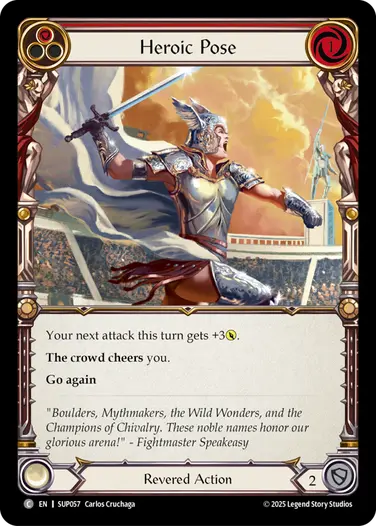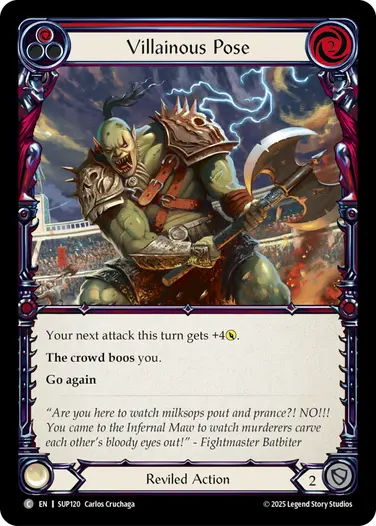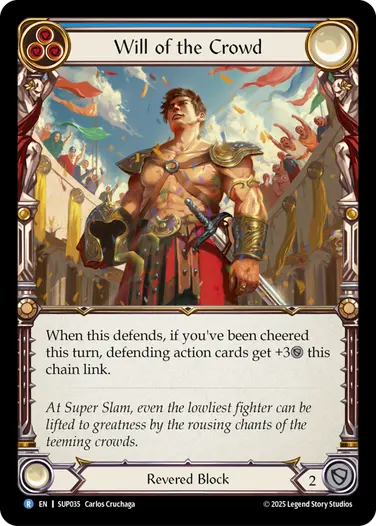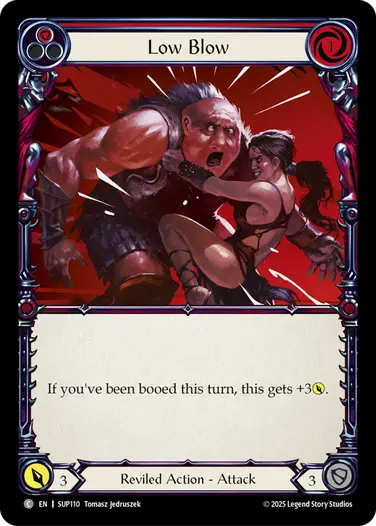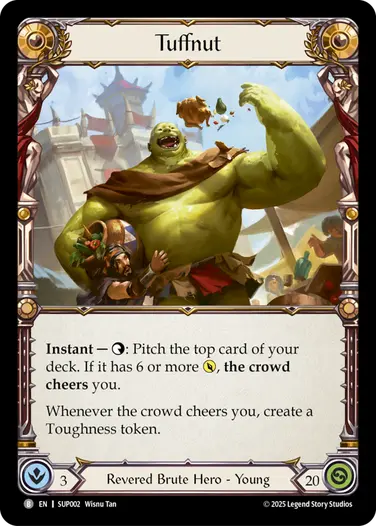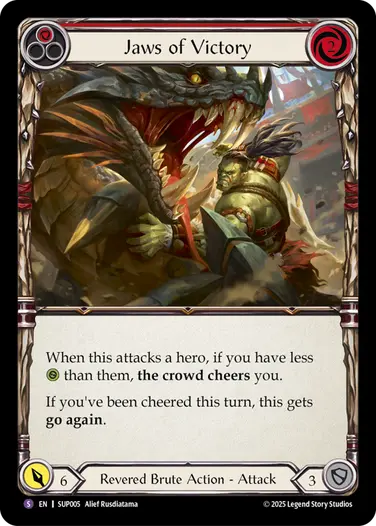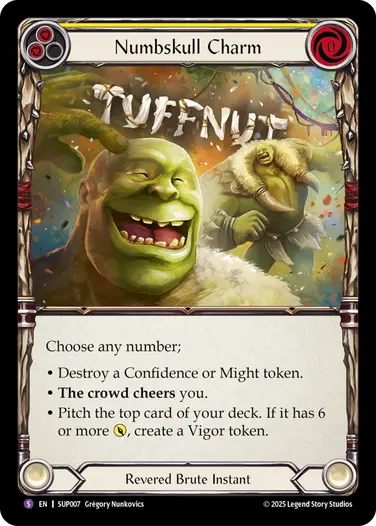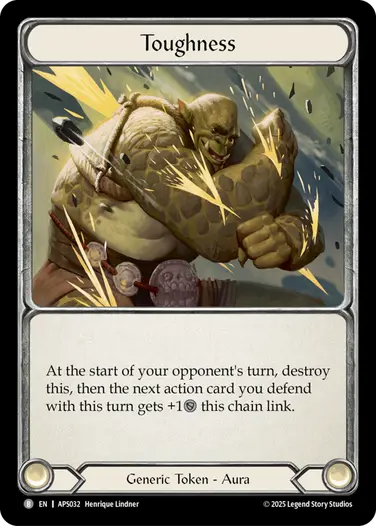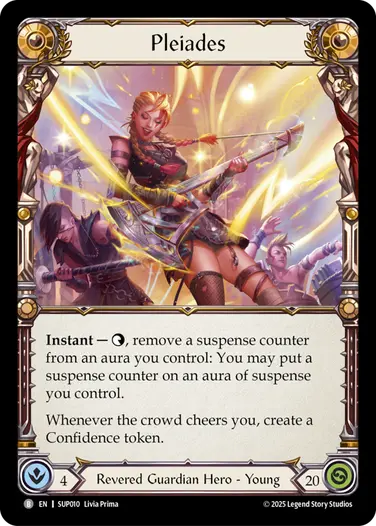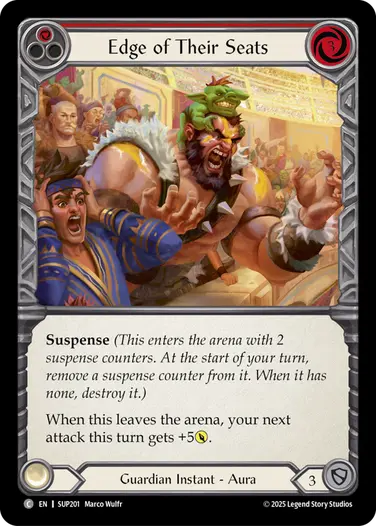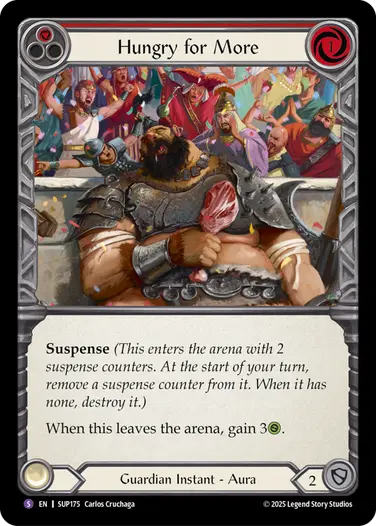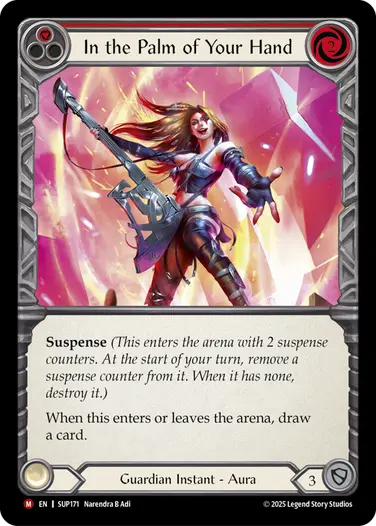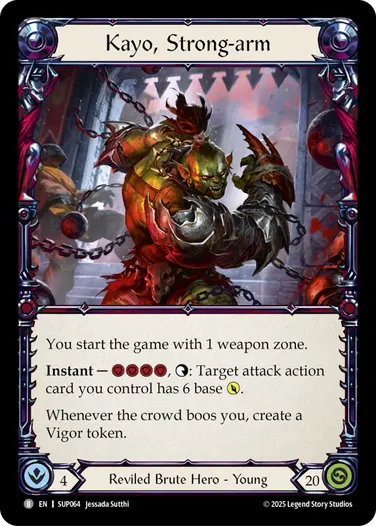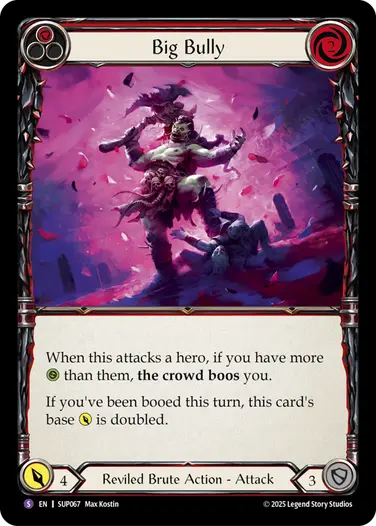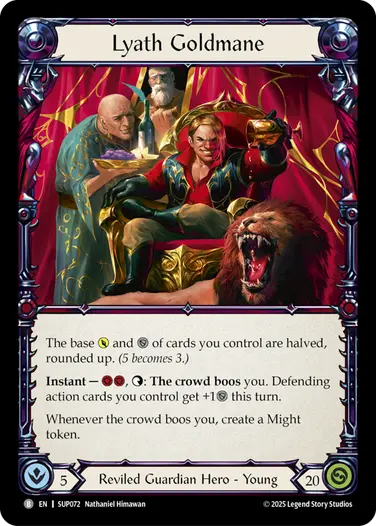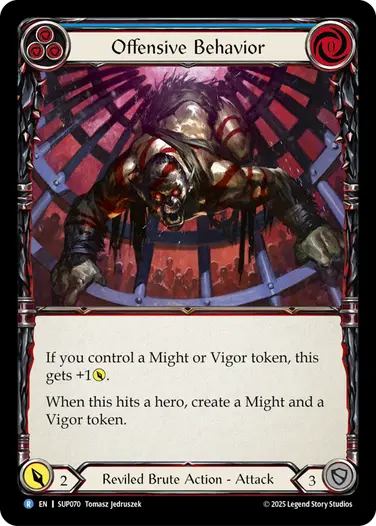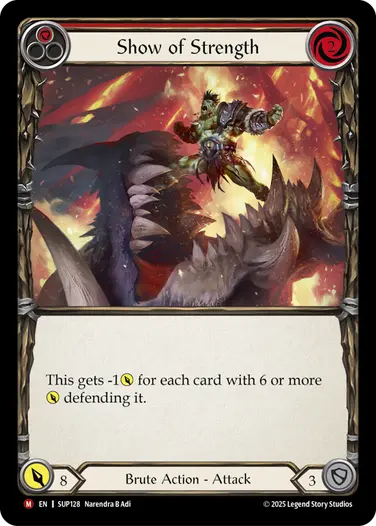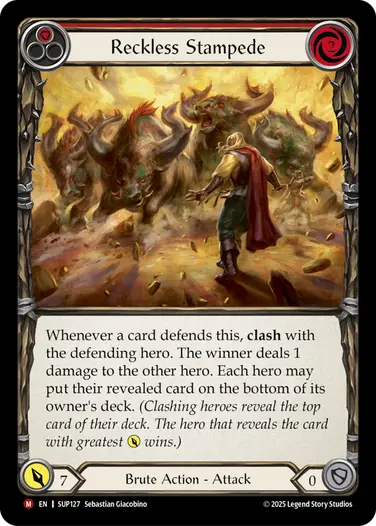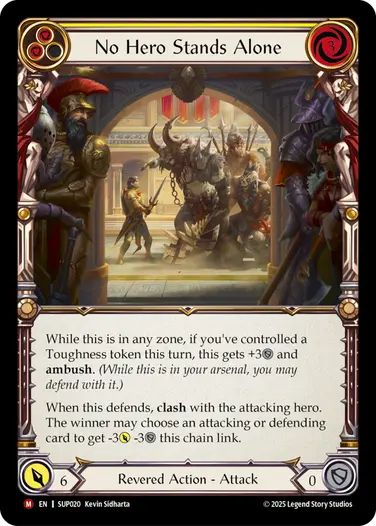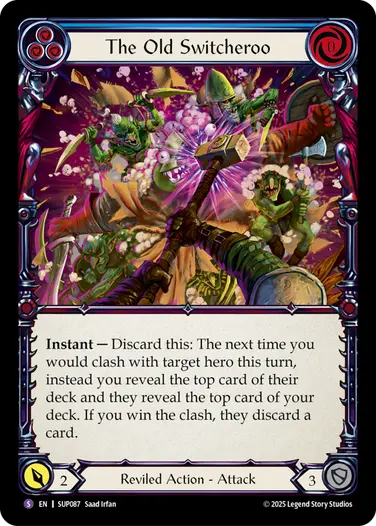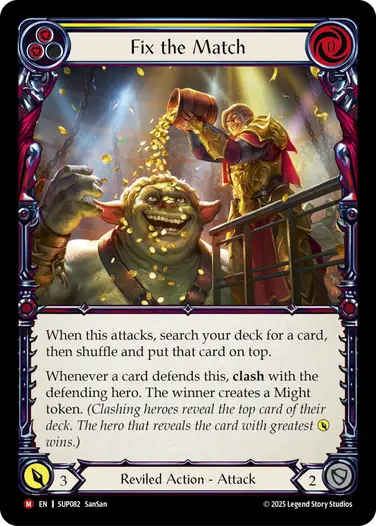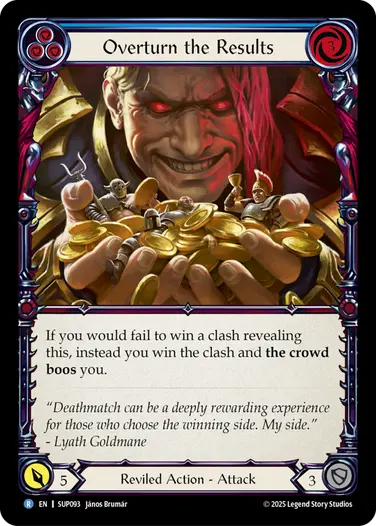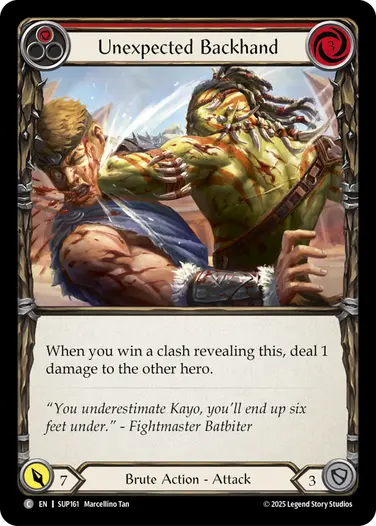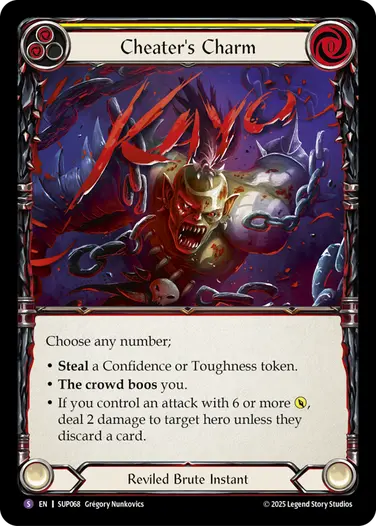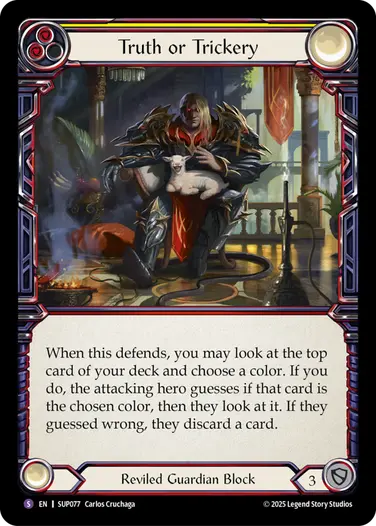Are you reeeeeeeeady to enter the ring?! We return to the Deathmatch Arena, back to this hallowed ground speckled with the crowd’s raucous roars, their bated breaths held in suspense, and all the gore and savagery the heroes can muster. The rules tag-team duo: Joshua “Judge Dreadnought” Scott and Niccolo "Iron Gavel" Paqueo are here to bring us up on the latest rules surrounding Super Slam’s limited formats, and what you can expect from your matches on stage!
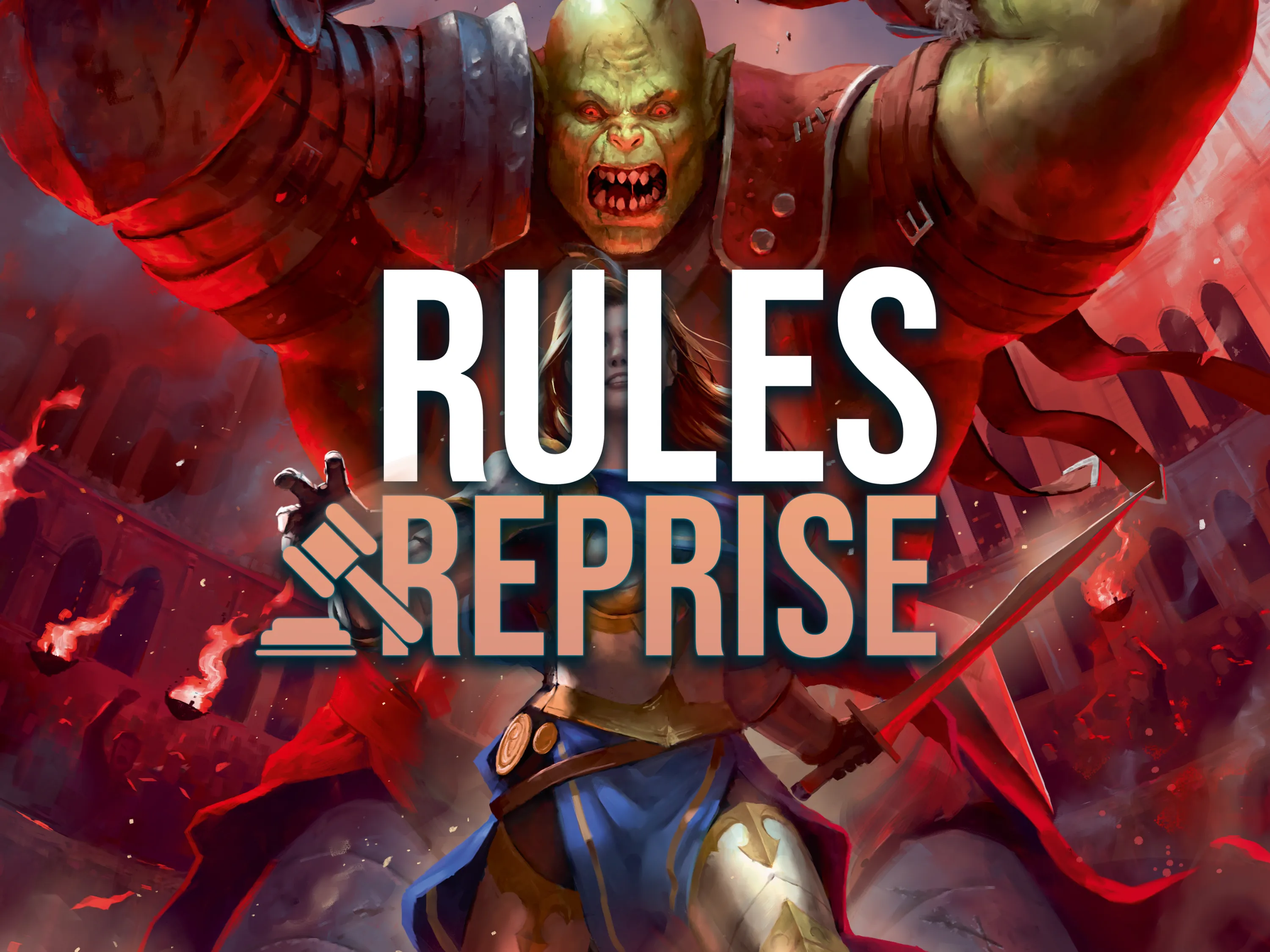
The Crowd Cheers and Boos
Super Slam features two new effects capturing the crowd’s reaction to the heroes’ acts of glory and misery. Cards throughout Super Slam will have effects where the crowd cheers you or the crowd boos you.
On their own, these effects do not do anything; however, several cards and effects look to see if you’ve been cheered or booed this turn for additional effects and to meet activation/play requirements.
The crowd cheering you and the crowd booing can also satisfy triggering conditions. For example, Tuffnut will trigger and create a Toughness token whenever the crowd cheers you. If the crowd cheers you/boos you multiple times in a turn, this can cause triggered abilities like these to trigger multiple times.
Last but not least, the crowd cheering you and the crowd booing you in a single turn does not cancel each other out.
Tyler playing as Tuffnut, has the same life total as their opponent, and has not been cheered yet this turn. They attack Nic with Jaws of Victory. Before Jaws of Victory's chain link resolves, Tyler resolves Numbskull Charm, choosing the second mode to have the crowd cheer them. Because the crowd cheered them, this triggers Tuffnut’s ability. Tyler creates the Toughness token from resolving Tuffnut’s triggered effect. Lastly, Jaws of Victory’s condition has been met by being cheered by the crowd this turn, so it will get go again.
Auras of Suspense
Rathe’s resident rockstar Pleiades loves keeping both the crowds and heroes in a state of suspense. The suspense keyword is a new ability featured on several aura cards in Super Slam. Thematically, you'll see effects reference aura cards with this ability referenced as "aura of suspense."
Suspense has three unique features:
- 2 suspense counters are added to the aura of suspense as it enters the arena.
- At the start of your turn, you remove a suspense counter from the aura.
- At any time the aura of suspense has no suspense counters on it, the effect will trigger and destroy the aura.
Effects can put or remove suspense counters onto these auras. Doing so can delay or speed up the right moment when the suspense triggered effect destroys the aura and removes it from the arena (which may also trigger other effects).
Suspense will trigger when the card has no more suspense counters on it AND it will be destroyed if there are no counters on it when the triggered effect begins to resolve. Typically, this will happen during the start of turn where players do not have priority to respond to this triggered effect. However, if suspense triggers during an action phase, Pleiades can use her ability to put a suspense counter on that aura, preventing it from being destroyed by its own triggered effect.
Power Modifications
Lyath and Kayo, along with several other cards in Super Slam, modify the base power and defense of cards, which is different from how typical effects modify these properties.
Without diving too deep into the Flesh and Blood continuous effect order, the following is a summarized order of how multiple effects like these will interact with each other in most of your games in the Super Slam limited format.
- First, apply effects that set the base power/defense (e.g. Kayo’s ability)
- Apply effects that multiply the base power/defense (e.g. Big Bully)
- Apply effects that divide the base power/defense (e.g. Lyath’s ability)
- Apply effects that increase the non-base power/defense (e.g. Offensive Behavior)
- Apply effects that decrease the non-base power/defense (e.g. Show of Strength)
Tyler, playing as Kayo, has been booed this turn and attacks Nic with Big Bully. Big Bully at this point has 8 base power. In the reaction step, Tyler resolves Kayo’s ability targeting Big Bully. As a result, the base power value of Big Bully is recalculated to 12. This is because you will first set the base power of this card to 6, then you will double the base power because you were booed.
Clashing in Super Slam
The famous Heavy Hitters mechanic returns in Super Slam, and this time there are several new effects that can modify and interact with the way a clash is conducted.
When performing a clash, both heroes involved will reveal the top card of their decks. The hero that reveals the card with the greatest power wins.
- If you win a clash, the opponent has failed to win the clash.
- If nobody wins a clash, you’ve both failed to win the clash.
- If both you and the opponent reveal a card with the same power, you’ve both failed to win the clash.
- If both you and the opponent reveal a card without a power value and/or don’t reveal a card, you’ve both failed to win the clash.
- If you reveal a card with a power value and the opponent reveals a card without a power value, you win the clash.
- If you reveal a card with a power value and the opponent doesn’t reveal any card, you win the clash.
In short, there's either one winner or you both failed to win.
What if you activate The Old Switcheroo?
The Old Switcheroo is a card that changes the reveal terms of the clash. When you activate The Old Switcheroo, you will target a hero and generate a replacement effect that is applied to the next clash you perform with that targeted hero that turn.
When that clash event occurs, instead of you revealing the top card of your deck and the targeted hero revealing theirs, you will instead reveal the top card of each other’s deck. If you win the clash, the targeted hero will discard a card. If the targeted opponent wins the clash, you will not discard a card from the subsequent conditional effect.
If The Old Switcheroo is applied to a clash, you will resolve The Old Switcheroo’s clash and the conditional effect before you proceed with resolving the remainder of the effects from the original clash.
Tyler attacks Nic with Fix the Match. Nic defends it with one card, triggering a clash. Before the clash triggered effect resolves, Tyler activates and resolves The Old Switcheroo from hand, targeting Nic. Tyler and Nic proceed to performing the clash from Fix the Match; however, The Old Switcheroo’s replacement effect is applied and both players will clash by revealing the top card of each other’s deck instead of their own. Tyler wins, resulting in Nic discarding a card from their hand. Tyler then creates a Might token from resolving the remainder of the Fix the Match’s effect.
What if you reveal Overturn the Results with The Old Switcheroo?
Overturn the Results generates a replacement effect that changes the outcome of a clash event (similar to the infamous Victor Goldmane). If Overturn the Results is revealed by its owner during a clash event and that player fails to win the clash, the result of the clash is changed from that player failing to win to a result where they win and the crowd boos them.
As The Old Switcheroo alters who reveals what cards from where, this can lead to some scenarios where Overturn the Results (and similar cards) can be revealed by players other than their owner. Cards with effects are conditioned on “you” revealing that card will only be generated if the owner reveals the card. The "you" part refers to the controller of the card/effect, or the owner if there is no controller. If another player other than this card’s owner reveals these cards during a clash, their effects are not generated/triggered.
Charms
Each flexible in their own right, the charm cards can offer some tactical advantages in your Super Slam games. As a reminder with all cards that allow players to choose multiple modes, you will resolve the modes in the order printed on the card.
Tyler attacks with Big Bully then plays Cheater’s Charm for its second and third modes. When resolving Cheater’s Charm, the crowd will first boo Tyler, which will double the card’s base power from 4 to 8, then Tyler will deal 2 damage to the targeted hero unless they discard a card.
Can you purposefully "not look" at the card for Truth or Trickery?
No. If you want to resolve the optional trigger after defending with Truth or Trickery, you must both look at the top card of your deck and choose a color.
If you can't look at the top card of your deck (you have no cards), the optional effect cannot be resolved.
It's important to note that you do NOT get the opportunity to look at the top card of your deck again after you've chosen a color. Only the opponent gets to look to confirm whether they've guessed correctly or not. The design of the card requires you to look at the card beforehand, so you can ensure that the opponent will discard if they guess incorrectly.
Are there any weapons in Super Slam limited?
No. When playing a Super Slam limited format like Sealed Deck or Booster Draft, there are no basic weapon cards that your heroes can start the game with. In these particular formats, you will be delivering the hardest hits to your opponents using your attack action cards.
If a situation occurs where neither player can advance the game state, the game ends in a stalemate. In swiss rounds, players may play another game with the time remaining in the round to determine a winner. In top-cut rounds where a winner must be determined, here is the procedure outlined in the Tournament Rules and Policy:
- Step 1 - The players are warned that if no progress is made, the winner of the game will be determined by the highest life total. If no player makes an action to progress the game state towards a result other than a draw, go to Step 2.
- Step 2 - The winner is the player whose hero has the highest life total in the current game. If neither hero has a higher life total, go to Step 3.
- Step 3 - Players start a new tiebreaker game with 4 turns total (2 turns per player). After 4 turns, go to Step 4.
- Step 4 - The tiebreaker game continues until one hero has a higher life total and the winner of the match is that hero’s player. If the tiebreaker game ends in a draw, go to Step 5.
- Step 5 - The winner of the match is the player that had the highest standing before the match began.
And that’s the bottom line for this week’s Rules Reprise on Super Slam’s limited formats. Stay tuned for our Rules Reprise on Super Slam’s Classic Constructed impact coming soon!
